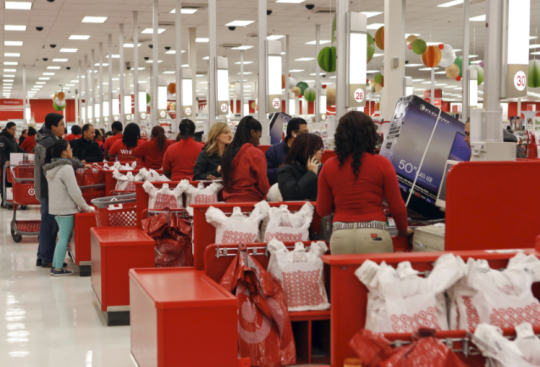
Target recently announced that it would raise its minimum wage to $11 per hour across the board — including for seasonal employees being hired for holiday 2017 — as the first step toward offering $15 per hour by 2020. The move may simply be a sign that a tightening labor market is finally putting upward pressure on wages, or it could signal Target’s recognition of the role front-line employees play in creating a positive customer experience. The Retail TouchPoints editors discuss whether the move might signal the beginning of a “bidding war” among retailers for the best employees.
Debbie Hauss, Editor-in-Chief: OK first, it’s great that Target is moving in a positive direction, but it won’t be $15 until 2020. A lot can happen in the next few years. That said, it is the right direction to set the minimum wage above $10. The move acknowledges the challenges retailers are having securing qualified, motivated, loyal store employees. I also think it’s a good time of year to be doing this — as the holiday season is heating up. Generally, I find Target to be a better-run store compared to its direct competitors, including Walmart and Kmart. Target also may be looking to other examples, such as Costco, which touts a starting wage of $11.50 and an average hourly wage of $21. Another business with arguably happy employees is Trader Joe’s, which starts employees at around $13 and is focused on giving employees some control over their schedules.
Adam Blair, Executive Editor: Target is making a smart move with its across-the-board minimum wage hike to $11 per hour. In the short term, this should polish its image as an attractive place to work, particularly for people displaced by the recent hurricanes in Texas, Florida and Puerto Rico. Given that nationwide action on a minimum wage increase seems unlikely for the foreseeable future, the promise to hit the $15 mark by 2020 puts Target out ahead of the patchwork of city- and state-level minimum wage laws aiming at the same figure. It also seems smart to include seasonal workers: in a tightening labor market, as this will give Target a better shot at retaining the “star players” for full-time work going into 2018. The only caveat is that Target will need to boost worker productivity along with wages in order to keep this move from throwing the balance sheet out of balance.
Klaudia Tirico, Features Editor: I believe that retailers who treat their employees well and pay them the wage they deserve will always win. Target hiking up the minimum wage to $11 per hour with the intention of bringing it to $15 per hour by 2020 is a positive move that will reflect nicely on the company, which can generate a snowball effect onto the employees and then onto the customers. A well-paid and well-treated employee, in my opinion, is more likely to come to work happy and go the extra mile in terms of customer service. It’s a win-win situation. However, this could also mean an influx of undeserving applicants, so Target will have to be careful during the hiring process, especially for seasonal workers.
Glenn Taylor, Senior Editor: Good for Target for making this move. Like Walmart’s greater investment in its employees that began in early 2016, it’s easy to see this as a PR decision, but Target already had a better reputation than Walmart when it comes to managing its store employees. The investment in these employees seems to have helped Walmart even as it presumably cuts into profits, so I imagine Target management feels it can accomplish the same thing. From a business perspective, Target may be spreading itself thin, especially since the company is presently undergoing a $7 billion reinvestment in its new store formats. That’s a lot of money going around, but in the long run, the wage investments are definitely a good sign for the retailer’s future prospects. Hopefully the wage increase also comes with even more comprehensive training for employees, so that more of them will feel like the job is something they can continue to grow in. As more big-name brands take on wage issues, I foresee more retailers following suit, especially if they realize the long-term benefits.






